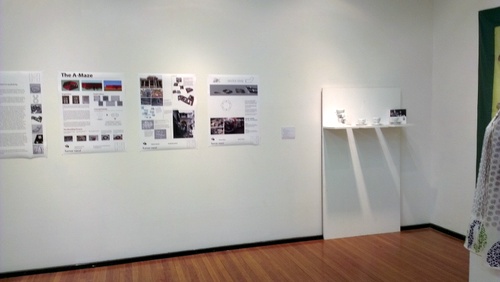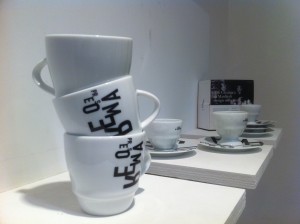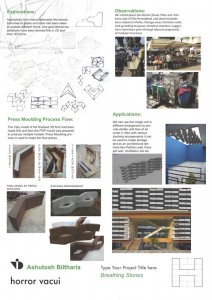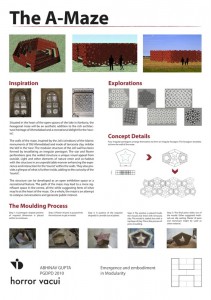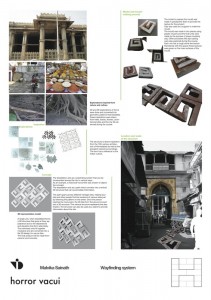Rod Bamford
Horror Vacui
Syntropy- Horror Vacui Studio Emergence and Embodiment in modularity Open Elective Course National Institute of Design, Ahmedabad, India, 2010
Course Convenor & Leader- Roderick Bamford
Abhinav Gupta ‘The A-Maze’
Robert Maier ‘Sector 60’
Malvika Sainath ‘Wayfinding System’
‘Horror Vacui’, a concept proposed by Aristotle in the Fourth book of Physics, is derived from observations that in nature, empty spaces are readily occupied. The term has since been adapted in Art and Architecture to express a fear of or reluctance to accept ‘emptiness’ in a planned space or composition.
In this open elective course ‘Horror Vacui’ has been adopted as a framework to explore the ways in which we structure the ‘space in between’, a genesis for adaptive design solutions applied to the built environment. The questions this poses are further complicated by the multi-functional usage of spaces in the context of rapidly developing environments such as the city of Ahmedabad.
The heritage of Indian architecture, traditional arts and crafts have been a rich source of inspiration for participants in this project, and provided a reference for developing solutions for a contemporary context where socio economic, cultural, and environmental factors compete for attention in the search for design decisions that engage contested boundaries between private and public space. Conversations about the built environment have not been restricted to the structure of buildings or their interior spaces, and we have responded to challenges on the street. The aim has been to reach appropriate solutions which can be flexibly applied to specific environmental contexts, designing systems with the structural capacity to proportionally vary scale and purpose. Photographic explorations of spatial and systems relationships at selected sites across Ahmedabad have been used to inform the design of modular, three dimensional wall or screen systems for specific applications. The types of structures considered have included screens for privacy and acoustics, ventilation systems, articulated barriers, and those that could support plant growth, vertical gardens, store water or other goods. Modular designs suitable for serial production have evolved through models and then prototypes realised using simple mold making processes suitable for materials such as ceramic, plaster, concrete and glass.
Horror Vacui also explores relationships between two conceptual frameworks in design thinking: the emergent, where decisions are generated from the interaction of new ideas, and the embodied, where decisions are derived within predetermined constraint conditions. In this project the embodied constraints include those of particular utility, site, community, process and sustainability. The emergent ideas are visions for the regeneration of contested ‘spaces for living’ responding to the values of culture, identity and quality of life threaded across Ahmedabad’s urban fabric. The prototypes and posters on display present a range of ideas seeking an appropriate contextual balance between social, technical and material benefits of design in the built environment, and importantly, places for shared enjoyment.
My thanks and gratitude go to all the NID faculty and technical staff who have supported this project, along with an appreciation for the way our students have enthusiastically engaged with this challenging project.
Manfredi ceramics
Roderick Bamford & Frost Design
Ceramica di Manfredi 10th Anniversary Cup Suite Porcelain, onglaze enamel, 2010
Photograph c/- Manfredi Enterprises Manufacturer – Monno Porcelain and Bone China, Dhaka, Bangladesh
Roderick Bamford & Frost Design Ceramica di Manfredi 10th Anniversary Tazzalta Mug & Saucer Porcelain, onglaze enamel, 9.5 x 9 cm, 2010
Photograph c/- Manfredi Enterprises Manufacturer – Monno Porcelain and Bone China, Dhaka, Bangladesh
Statement for the 10th Anniversary Cup Suite
2010 celebrates the 10th anniversary of Ceramica di Manfredi, Espresso di Manfredi and the Cup Suite, designed by Roderick Bamford. For the occasion, a special Anniversary issue of the suite was commissioned, with *Frost design developing a new dynamic branding for the recent Tazzalta mug and the Universal saucer. The Original Cup Suite, a high quality white porcelain café drinking suite, includes cups, beakers and an innovative ‘universal saucer which fits all the drinking vessels, saving space in the café environment and cost. Over the ensuing years the suite has grown to include an additional Tazzalta mug and prototype for a desert bowl. The Anniversary Cup Suite is manufactured in Bangladesh by Monno Porcelain and Bone China, using jolleying and casting technologies.
The ʻCup Suiteʻ is distributed by Manfredi Enterprises. It holds international registrations and was included in the exhibition Smart Works at the Powerhouse Museum in 2007. This influential survey exhibition showcased the place and meaning of the ʻhandmadeʼ in design and relationships between individuals and partnerships, nationally and internationally. A manufactured example of the cup suite is held in the Museumʼs permanent Collection
The Cup Suite establishes a framework that synthesizes aesthetic and empirical strategies to enhance sustainable design objectives in product development. Interlocking and interchangeable tableware items designed for the Cup Suite reflect a fluid oscillation that acts a multifunctional metaphor for tableware design. It visually activates a functional schema where individual tableware items physically interact with different sizes and formats in the range, extending the utility of each and enabling a corresponding reduction in tooling, manufacturing and distribution costs associated with redundant variants. The strategy leverages quantitative efficiencies of the design through ‘emotional capital’. In doing so it amplifies the benefits achieved in the ‘use’ phase of the object lifecycles and affords various tableware presentation formats and functionality within a single tableware setting.
The Ceramica di Manfredi Cup suite was designed by Rod Bamford in Sydney and originally manufactured by Royal Thai Porcelain in Thailand
The decision to move the production to Bangladesh in the early 2000’s was based on the quality of the porcelain produced by Monno Ceramics, and the company’s interest in working with Manfredi’s and myself to extend the Cup suite and develop the demanding shapes and graphic surfaces of the Ceramica di Manfredi tableware range . The Company’s international export focus and progressive approach to working conditions and ethical practices was also a factor in the decision.
All the Ceramica di Manfredi range is produced by jolleying and casting using a high quality porcelain and onglaze enamel decals
